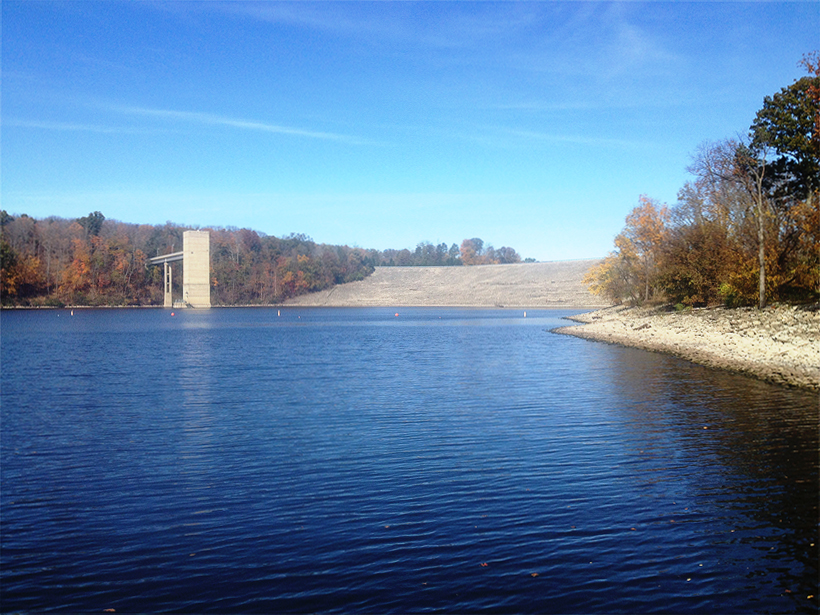Source: Journal of Geophysical Research: Biogeosciences
Aquatic ecosystems have an intimate bond with the composition and behavior of the atmosphere, apparent in the complex exchange of heat, energy, and greenhouse gases. For example, streams and waterways release nitrous oxide (N2O), a particularly potent greenhouse gas. This gas contributes to ozone depletion, but scientists have only recently turned attention to nitrous oxide production in reservoirs, which is difficult to estimate because of the convoluted influence of microbes and oxygen variability.
Atmospheric concentrations of the gas have risen 19% since 1750. Roughly 35% to 45% of the current level is due to anthropogenic emissions, mostly from agriculture. Agricultural nitrogen is typically converted into nitrous oxide by one of two main processes: nitrification, in which microbes break down ammonium to produce nitrous oxide, and denitrification, which occurs when microbes convert nitrate (NO3–) to nitrous oxide. These processes are well documented in soils, but scientists’ understanding of nitrous oxide production in aquatic environments is not as detailed. A comprehensive evaluation of the process in reservoirs has broad implications for land use and resource management across the globe.
To this end, Beaulieu et al. measured nitrous oxide depth profiles in 20 reservoirs across the Midwest. These reservoirs are used for a variety of applications, including water supply, flood control, and recreation. They found that nitrous oxide was supersaturated in the uppermost layer of water, known as the epilimnion, in 80% of the reservoirs—a clear indication that reservoirs are typically a source of atmospheric nitrous oxide.
The level of nitrous oxide beneath the surface layer of water in the reservoirs was more variable, but the authors found that lake turnover events resulted in nitrous oxide production throughout the water column. The researchers suggest that although there was a high degree of variability across reservoir systems and time, the levels of nitrogen and oxygen and the degree of heat stratification in the water are enough to allow scientists to predict nitrous oxide production and emission.
To better understand nitrous oxide release, the authors suggest further studies outside the Midwest, in reservoirs of differing size and depth, in differing watershed environments, and at differing stages of lake turnover. By identifying the significant role of reservoirs as an emission source, however, the authors have laid the groundwork for the fundamental scientific understanding of how land use and water resources can translate to changes in the composition of the atmosphere. (Journal of Geophysical Research: Biogeosciences, doi:10.1002/2015JG002941, 2015)
—Lily Strelich, Freelance Writer
Citation: Strelich, L. (2015), Reservoirs Act as a Source for Greenhouse Gases, Eos, 96, doi:10.1029/2015EO038929. Published on 6 November 2015.
Text © 2015. The authors. CC BY-NC 3.0
Except where otherwise noted, images are subject to copyright. Any reuse without express permission from the copyright owner is prohibited.

